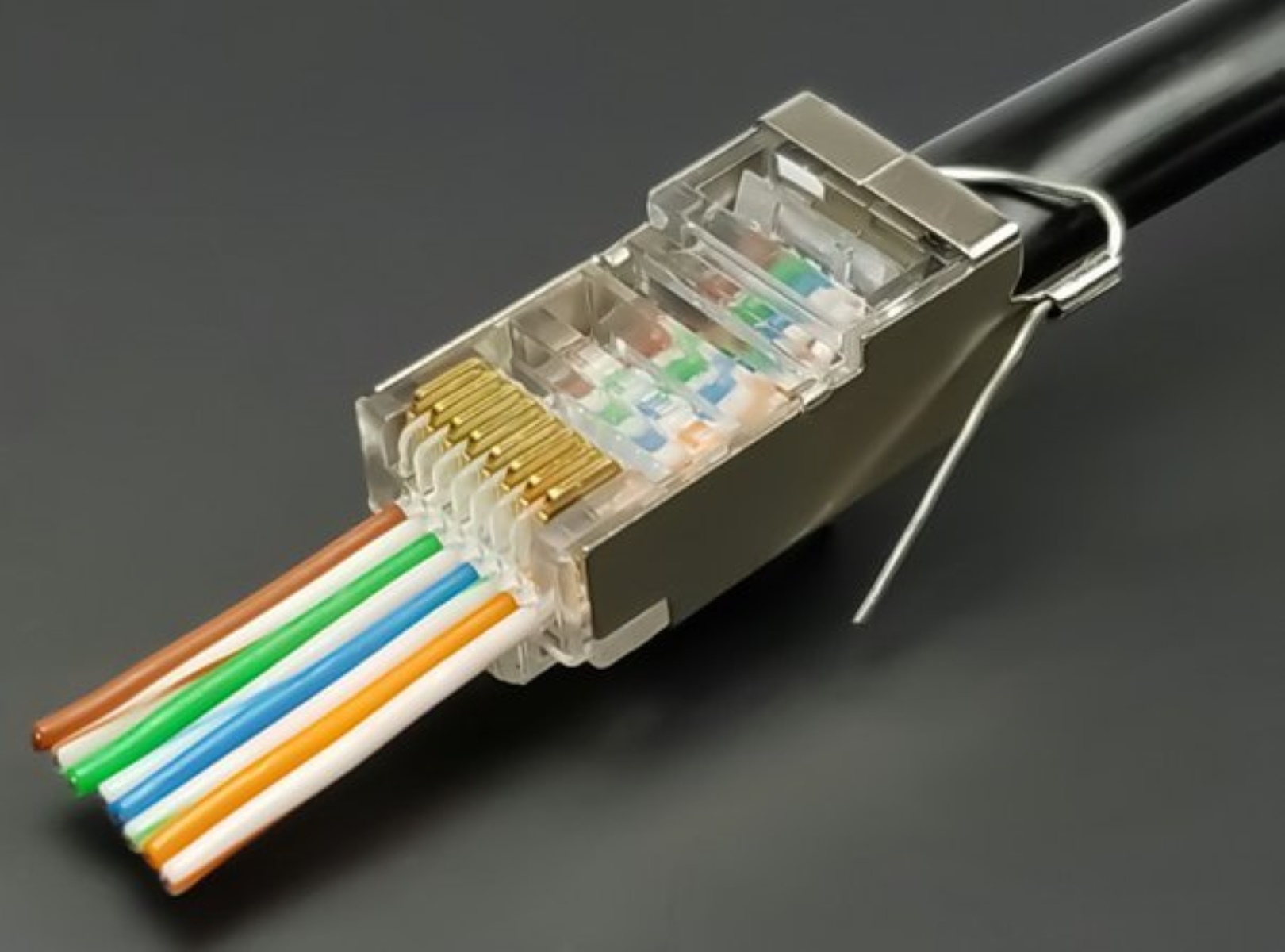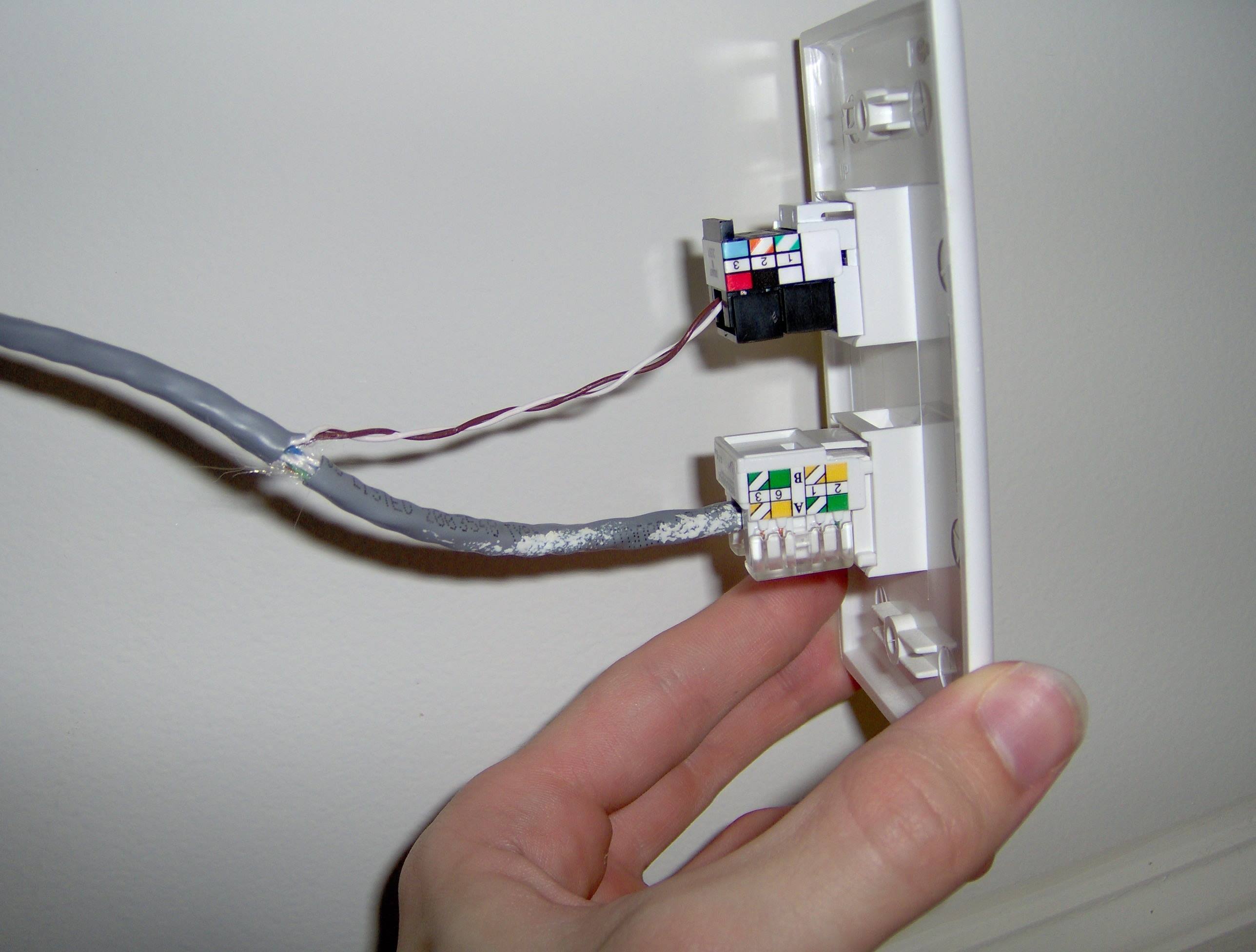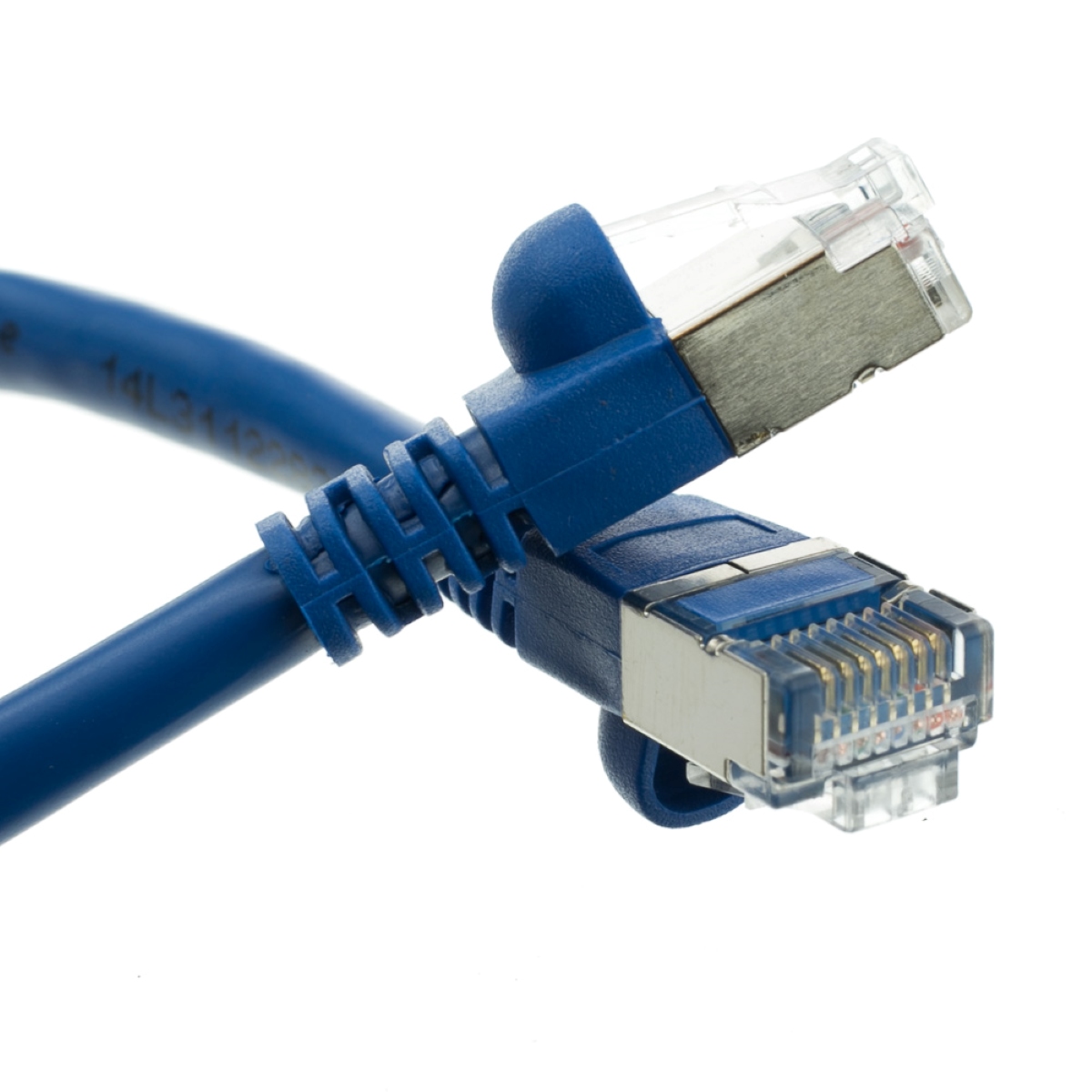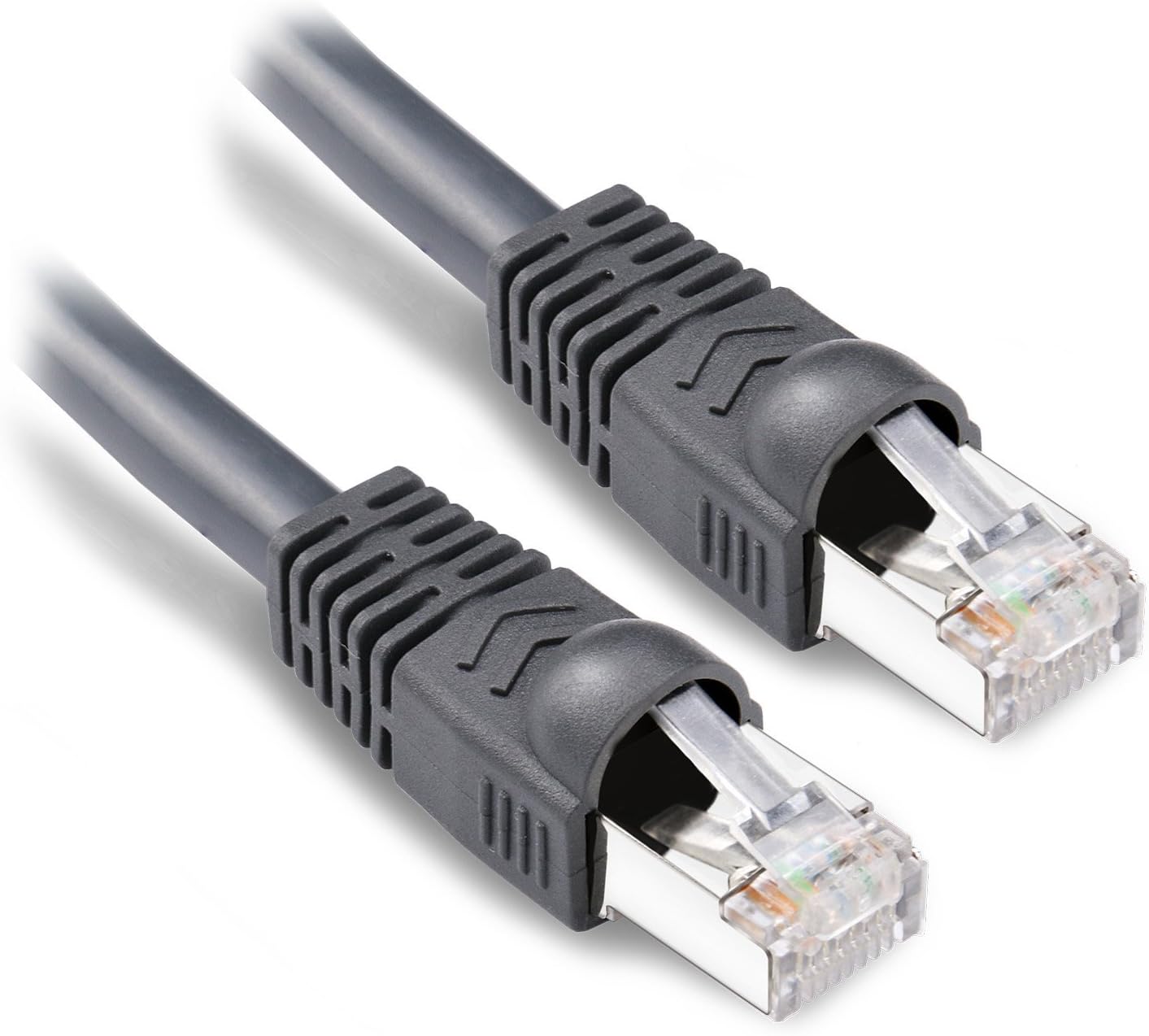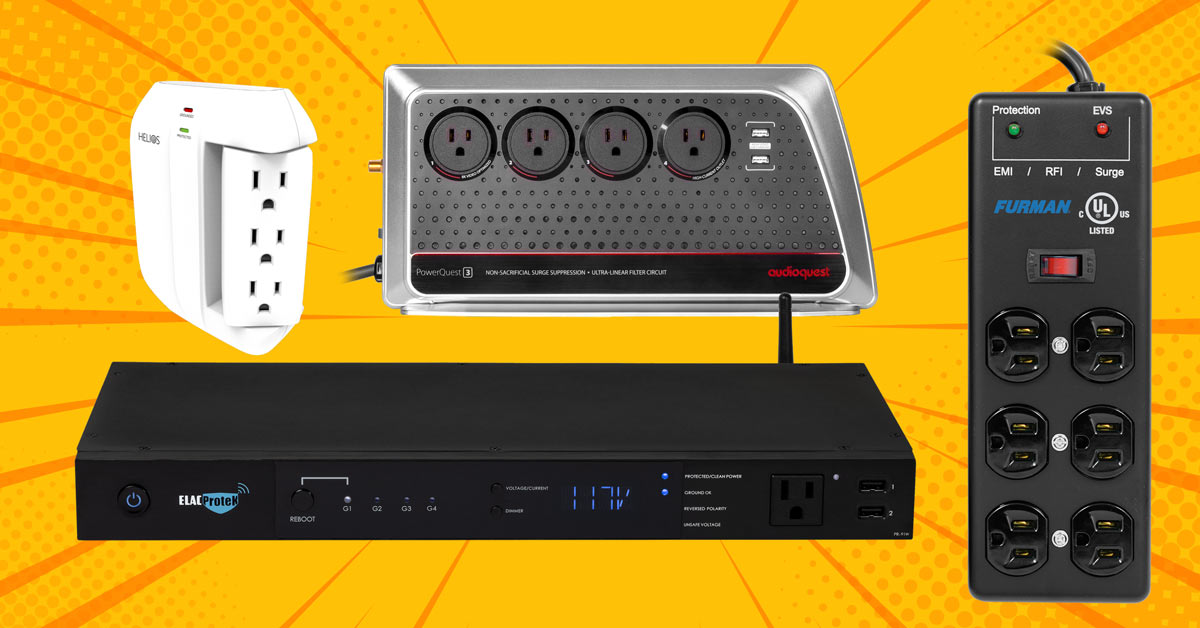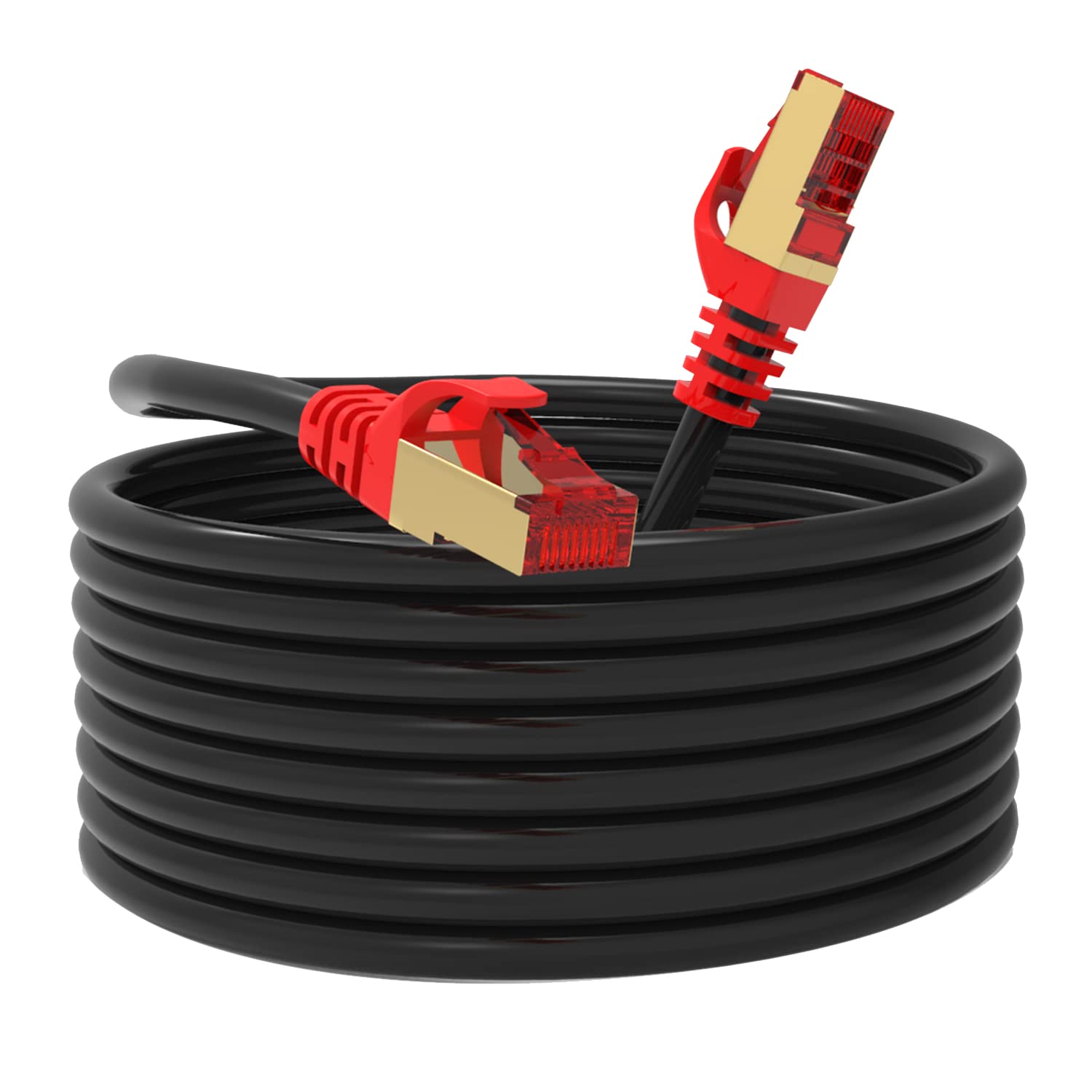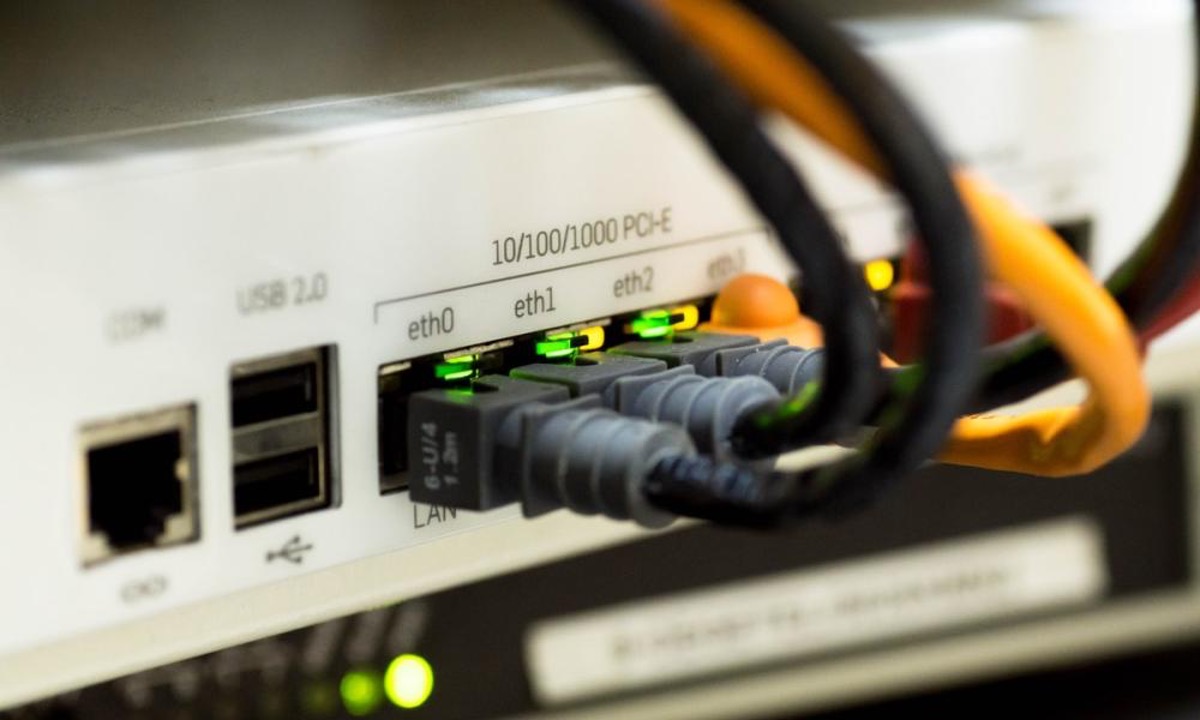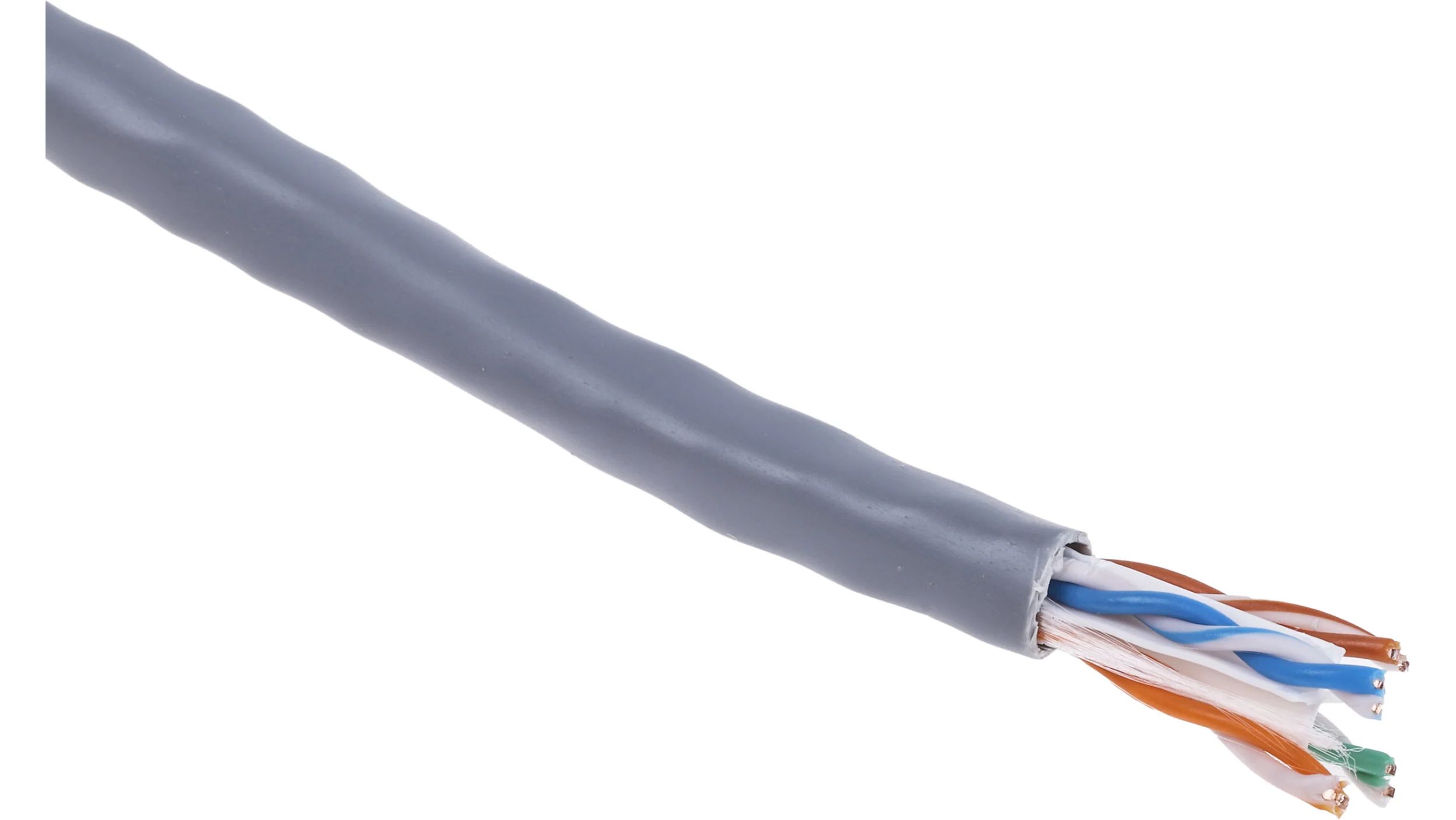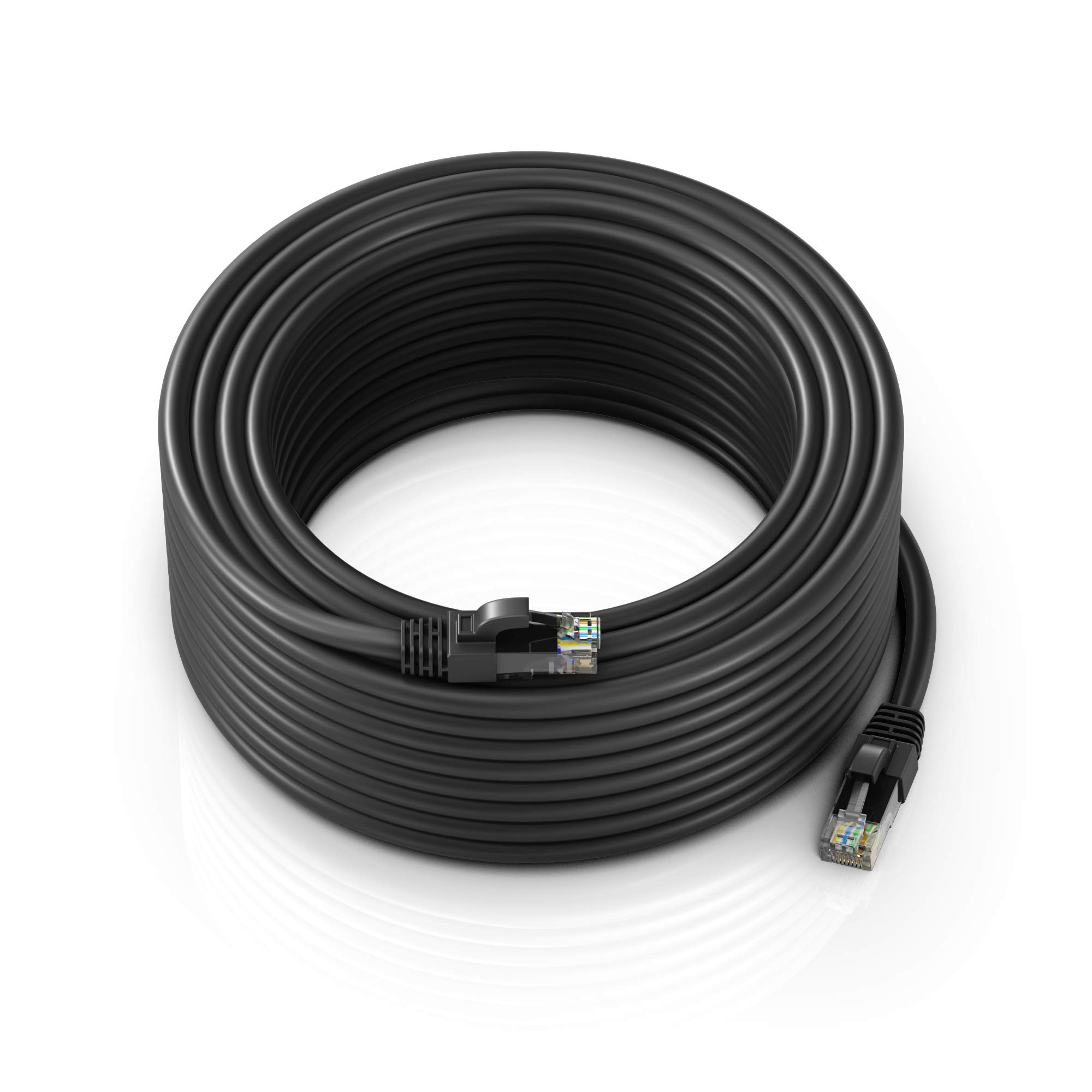Why is Grounding Ethernet Cable Important?
Proper grounding of ethernet cables is essential for maintaining a stable and efficient network connection. When it comes to electronic systems, grounding plays a crucial role in providing safety, protecting equipment, and ensuring reliable operation. Specifically, grounding ethernet cables serves several important purposes:
1. Electrical Safety: By grounding ethernet cables, you reduce the risk of electric shock or damage to devices and network equipment. Grounding provides a path for electrical current to safely dissipate into the ground, preventing it from flowing through sensitive components.
2. Protection Against EMI: Ethernet cables can be susceptible to electromagnetic interference (EMI) caused by nearby power lines, appliances, or other electrical devices. Without proper grounding, EMI can disrupt the signal transmission, leading to data corruption, packet loss, and network instability. Grounding helps to dissipate unwanted electrical noise, minimizing the impact of EMI on the network.
3. Static Electricity Prevention: Static electricity buildup can pose a significant threat to sensitive electronic components, including ethernet cables. When cables are not properly grounded, static charges can accumulate and discharge, potentially damaging the cables or connected devices. Grounding provides a path for static electricity to be safely dissipated, reducing the risk of equipment failure.
4. Equipment Protection: Grounding ethernet cables can help protect network equipment from power surges or lightning strikes. By providing a direct path to the ground, excess energy is diverted away from the equipment and grounded, reducing the risk of damage or destruction.
5. Reliable Network Performance: A well-grounded ethernet network ensures consistent and reliable performance. Proper grounding minimizes signal interference, improves signal integrity, and reduces the likelihood of data errors or network disruptions. This is particularly important in environments where network reliability is crucial, such as data centers, industrial settings, or offices with sensitive electronics.
In summary, grounding ethernet cables is not only essential for electrical safety but also plays a vital role in ensuring reliable network performance, protecting equipment from damage, and minimizing the impact of electromagnetic interference. By following proper grounding practices, you can maintain a stable and efficient network connection, enhancing the overall functionality and longevity of your network infrastructure.
Understanding Ethernet Cable Grounding
Grounding ethernet cables involves establishing a connection between the cables and the ground to provide electrical safety and ensure reliable network performance. To understand how grounding works, it’s important to be familiar with a few key concepts:
1. Ground: In electrical systems, “ground” refers to a conductive connection to the Earth’s surface. It acts as a reference point for the voltage levels in the system and provides a path for the dissipation of unwanted electrical current.
2. Grounding Wire: A grounding wire, also known as an earth wire or ground conductor, is an electrical conductor connecting the equipment or cables to the ground. It is typically made of copper or aluminum and is designed to carry excess electrical current safely to the ground.
3. Grounding Path: The grounding path is the route through which electrical current flows from the equipment or cables to the ground. It ensures that any excessive current is safely directed away, protecting both the equipment and individuals from electrical hazards.
4. Grounding Techniques: There are several methods of grounding ethernet cables, including bonding to a building’s grounding system, using dedicated ground rods, or connecting to grounded metallic structures. The specific grounding technique will depend on the requirements of the installation and the local electrical codes.
When grounding ethernet cables, it is crucial to follow industry standards and guidelines to ensure proper installation. Here are a few important considerations:
1. Grounding Connection: The grounding wire should be securely connected to the grounding point, ensuring low resistance and proper continuity. It is important to use appropriate connectors and ensure tight connections to prevent any potential loosening or disconnection over time.
2. Grounding Path Length: The length of the grounding path should be kept as short as possible to minimize resistance and maximize the effectiveness of the grounding. Longer grounding paths can introduce impedance and reduce the efficiency of dissipation.
3. Grounding Integrity: Regular inspections and maintenance should be conducted to ensure the integrity of the grounding system. This includes checking for loose connections, corrosion, or damage to the grounding wire or connectors. Any issues should be addressed promptly to maintain the effectiveness of the grounding.
By understanding the principles of grounding and following proper installation procedures, you can ensure the safety and reliability of your ethernet network. Grounding ethernet cables protects against electrical hazards, minimizes interference, and contributes to the overall performance and longevity of the network infrastructure.
Tools and Materials Needed for Grounding Ethernet Cable
Grounding ethernet cables requires a few specific tools and materials to ensure a proper and secure installation. Before starting the grounding process, gather the following items:
1. Grounding Wire: You will need a suitable grounding wire, preferably made of copper or aluminum. The wire should meet the requirements of local electrical codes and be of sufficient gauge to carry the expected electrical current safely.
2. Grounding Clamps: Grounding clamps, also known as ground connectors or grounding lugs, are used to connect the grounding wire to the cables and other grounding points. Choose high-quality clamps that provide a secure and reliable connection.
3. Wire Strippers: Wire strippers are necessary for removing the insulation from the grounding wire and ethernet cables to expose the conductive cores. Ensure that the wire strippers are appropriate for the wire gauge being used.
4. Crimping Tool: A crimping tool is needed to securely attach the grounding clamps to the grounding wire and ethernet cables. This tool will help create a strong and reliable connection.
5. Grounding Point: Identify a suitable grounding point in the area where the ethernet cables are being installed. This could be a building’s grounding system, a dedicated ground rod, or a grounded metallic structure. Ensure that the selected grounding point meets local electrical regulations and provides a secure connection to the ground.
6. Protective Equipment: Whenever working with electrical components, it is essential to prioritize safety. Wear protective gloves and safety glasses to protect yourself from potential hazards during the grounding process.
7. Electrical Tape: Electrical tape can be used to secure and insulate the connections made during the grounding process. This helps to prevent any accidental disconnection or exposure of live conductors.
Ensure that all tools and materials are readily available before starting the grounding process. Taking the time to gather the necessary items beforehand will help streamline the installation and ensure a proper and secure grounding for your ethernet cables.
Remember to consult local electrical codes and regulations to ensure compliance and safety during the grounding process. If you are unsure about any step, it is always recommended to seek the assistance of a qualified professional to ensure a safe and effective grounding installation.
Step-by-Step Guide to Ground Ethernet Cable
Grounding ethernet cables is a straightforward process when following the proper steps. Here is a step-by-step guide to help you ground your ethernet cables effectively:
1. Identify the Grounding Point: Determine the appropriate grounding point for your ethernet cables. It could be the building’s grounding system, a dedicated ground rod, or a grounded metallic structure. Ensure that the chosen grounding point complies with local electrical codes and provides a secure connection to the ground.
2. Prepare the Grounding Wire: Measure and cut the grounding wire to the required length, leaving a bit of extra wire for flexibility. Strip off the insulation from each end of the grounding wire to expose the conductive core.
3. Attach the Grounding Wire to the Grounding Point: Connect one end of the grounding wire securely to the grounding point. Use a grounding clamp or lug to create a tight and reliable connection. Ensure that the connection is properly tightened and does not have any loose connections.
4. Prepare the Ethernet Cables: For each ethernet cable that needs to be grounded, strip off a small portion of the cable’s outer insulation and expose the individual twisted pairs. Use wire strippers to remove the insulation from the twisted pairs, revealing the conductive cores.
5. Connect the Ethernet Cable to the Grounding Wire: Take the exposed conductive cores of the ethernet cable and the other end of the grounding wire. Insert them into a grounding clamp or lug, then use a crimping tool to securely fasten the connection. Ensure that the connection is tight and properly secured.
6. Insulate the Connections: Once the connections are made, use electrical tape or heat shrink tubing to insulate and protect the exposed parts of the connections. This will help prevent accidental disconnections and protect against potential electrical hazards.
7. Test the Grounding: After completing the grounding process, it is essential to test the grounding to ensure its effectiveness. Use a multimeter or a ground impedance tester to measure the resistance between the grounding point and the Ethernet cables. The resistance should be low, indicating a good grounding connection.
By following these step-by-step instructions, you can effectively ground your ethernet cables to ensure electrical safety, protect against interference, and maintain reliable network performance. Remember to adhere to local electrical codes, consult professionals if needed, and prioritize safety throughout the grounding process.
Testing the Grounding of Ethernet Cable
After grounding your ethernet cables, it is crucial to test the effectiveness of the grounding to ensure that it is functioning correctly. By conducting thorough testing, you can verify that the grounding connection is secure and capable of providing electrical safety and reliable network performance. Here are the steps to test the grounding of ethernet cables:
1. Disconnect Power: Before performing any testing, ensure that all power sources to the network equipment and cables are safely disconnected. This will prevent any potential electrical hazards during the testing process.
2. Use a Multimeter: Obtain a multimeter with a resistance measurement function. Set the multimeter to the appropriate resistance range, typically in ohms (Ω).
3. Testing Grounding Path: Connect one probe of the multimeter to the grounding point or the nearest ground reference. This could be the building’s grounding system, a ground rod, or a grounded metallic structure. Place the other probe on the exposed grounding wire or the metal connection point where the grounding wire is attached to the ethernet cable.
4. Measure Resistance: With the probes securely in place, measure the resistance between the grounding point and the ethernet cable. The resistance should ideally be low, typically in the range of just a few ohms. A higher resistance reading may indicate a poor grounding connection or potential issues in the grounding system that need to be addressed.
5. Check Continuity: In addition to measuring resistance, it is essential to ensure continuity in the grounding path. Move the probes along the grounding wire and check for a consistent and stable resistance reading throughout the entire length of the wire. Any deviation or intermittent readings may indicate a loose connection or a break in the grounding path that requires attention.
6. Inspect Grounding Connections: While testing, visually inspect the grounding connections and clamps. Ensure that they are tightly secured and have no signs of damage or corrosion. Loose or faulty connections can compromise the effectiveness of the grounding system.
7. Document the Test Results: Keep a record of the resistance readings and any observations made during the testing process. This documentation will serve as a reference for future inspections and troubleshooting.
By following these steps and conducting periodic testing, you can verify the integrity of the grounding of your ethernet cables. Regular testing helps ensure the ongoing safety and reliability of your network connection, allowing for prompt identification and resolution of any grounding issues that may arise. If you encounter any concerns or uncertainties during the testing process, it is recommended to consult a qualified professional for further assistance.
Additional Tips for Grounding Ethernet Cable
When grounding ethernet cables, there are several additional tips to keep in mind to ensure a successful and effective grounding installation. These tips will help optimize the grounding process and enhance the overall safety and performance of your network connection:
1. Follow Electrical Codes: Familiarize yourself with the local electrical codes and regulations regarding grounding. Adhere to these guidelines to ensure compliance and the safety of your installation. If you are unsure about any requirements, consult a qualified electrician or grounding professional for guidance.
2. Proper Bonding: Ensure that all grounding connections, including those between the ethernet cables, equipment, and the grounding point, are securely bonded. This will help establish a reliable and low-resistance grounding path.
3. Avoid Loops and Kinks: When running your ethernet cables, avoid creating loops or kinks in the cables. These can cause signal interference and hinder the effectiveness of the grounding. Opt for smooth and straight cable runs to maintain optimal grounding performance.
4. Use Suitable Grounding Clamps: Choose high-quality grounding clamps or lugs that are suitable for the gauge of the grounding wire and firmly grip the cables. This will ensure a secure connection and minimize the risk of disconnection or corrosion over time.
5. Ground Individually: If you have multiple ethernet cables to ground, it is recommended to ground them individually rather than combining all the grounding wires into a single connection. This prevents ground loops and allows for better troubleshooting in case of any issues.
6. Maintain Regular Inspections: Conduct regular inspections of the grounding connections to ensure they are in good condition and properly secured. Look for any signs of corrosion, damage, or loose connections. Address any issues promptly to maintain the effectiveness of the grounding system.
7. Consider Surge Protection: In areas prone to power surges or lightning strikes, consider using surge protection devices to further safeguard your network equipment. These devices can help divert excess energy away from your equipment, reducing the risk of damage.
8. Document and Label: Keep a record of the grounding installation, including the location of grounding points and the cables that are grounded. Label the grounding connections for easier identification during future inspections or maintenance.
Remember, proper grounding is essential for maintaining a safe and reliable network connection. By following these additional tips, you can optimize the grounding process and ensure the longevity and effectiveness of your ethernet cables’ grounding system. If you have any doubts or questions, do not hesitate to seek professional advice from an experienced electrician or network specialist.
Conclusion
Grounding ethernet cables is a critical step in building a safe and robust network infrastructure. By properly grounding your ethernet cables, you can ensure electrical safety, protect against interference, and maintain reliable network performance. Understanding the importance of grounding and following the correct procedures is key to a successful grounding installation.
In this article, we explored the reasons why grounding ethernet cables is important. We discussed how grounding provides electrical safety, protects against electromagnetic interference, prevents static electricity buildup, and safeguards network equipment. Without proper grounding, the network can be vulnerable to electrical hazards, data corruption, and equipment damage.
We also delved into the understanding of ethernet cable grounding, including the concept of ground, grounding wire, grounding path, and various grounding techniques. It is crucial to have a solid grasp of these concepts to ensure effective grounding.
Furthermore, we provided a step-by-step guide to help you ground your ethernet cables properly. By following the outlined steps and using the necessary tools and materials, you can establish a secure grounding connection and ensure uninterrupted network performance.
Testing the grounding of ethernet cables is an essential part of the installation process. We discussed the importance of using a multimeter to measure resistance and ensure continuity in the grounding path. Regular testing helps identify any weaknesses in the grounding system that could lead to safety hazards or network issues.
Additionally, we shared additional tips to optimize the grounding process. These tips include following electrical codes, avoiding loops and kinks in the cables, using suitable grounding clamps, and maintaining regular inspections of the grounding connections.
By implementing these guidelines, you can create a well-grounded ethernet network that provides safety, reliability, and optimal performance.
Remember, if you are unsure about any aspect of grounding ethernet cables, it is always advisable to consult a qualified electrician or network specialist. Their expertise can ensure a proper and effective grounding installation tailored to your specific needs and comply with local electrical regulations.
Investing the time and effort into properly grounding your ethernet cables will contribute to the overall stability and longevity of your network, allowing you to enjoy a safe, secure, and high-performing network infrastructure.







